'Chakka Panja' team and Paul Shah announce financial aid for daily wage film technicians
4 years ago
keyran8lama@gmail.com
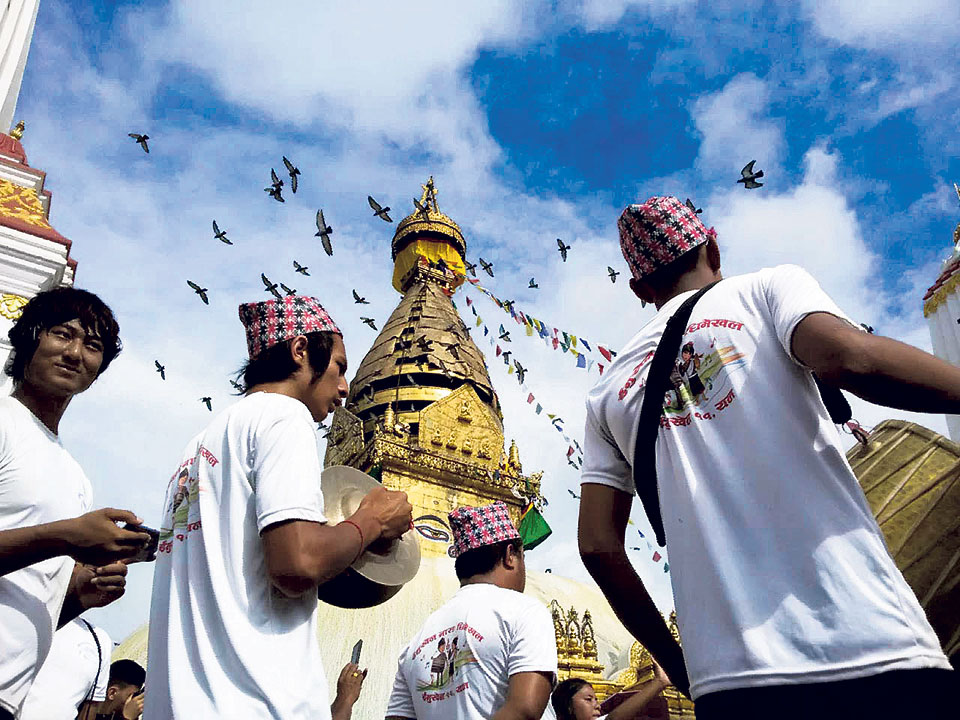
KATHMANDU, Aug. 20: On an early Saturday morning, 35 youngsters between the ages of 12 to 33 from Patan marched around the Swyambhunath stupa playing traditional musical instruments on the occasion of Gunla Parva. Their instruments consisted of Dha, Taa, Nyakhi, Bhushya, Chuchya, and Basuri (flute). Gunla Parva is a month long event that is observed by the Newars of the Kathmandu Valley during the Gunla month -- the ninth month of the Newari calendar.
The sound produced by the ensemble resonated on the hill-top. The dress code of the participating musicians -- boys donning dhaka-topi and girls wearing a white shirt with a badge -- indicated that the troupe belonged to a specific community. When asked, they informed that they had come from Imukhel, Patan.
Their procession ended in the eastern part of the Swayambhunath stupa with the entire troupe orchestrating a rhythmic showdown of traditional Newari music. The vibrant scene with the participation of the young generation reflected youth engagement to continue the age-old culture and tradition.
Gunla: its meaning and significance
The Gunla festival starts two days after Gathemangal every year. Explaining the etymology of the word Gunla, Deepak Buddhacharya, a priest at Swayambhunath shared, “In Nepal bhasa ‘gun’ means tenth and ‘la’ means month. Meanwhile, ‘gun’ also means hill and ‘la’ means fair that indicates traveling uphill.”
Gunla festival is mainly celebrated by the Buddhists of the Newari community. They go around different temples and shrines playing traditional musical instruments, and singing devotional songs. It is believed that the festival is celebrated to alert, and in the meantime, save the people from natural calamities such as floods, and landslides that occur during the monsoon season. Further explaining the motive of the festival, Buddhacharya added, “Monsoon occurs during the Gunla month. Heavy rainfall is evident during this time of the year.”
Youth Participation
The influence of western culture, as a result of globalization, is the main reason why today’s youths have sidelined their traditions. However, the growing awareness amid the younger generation has encouraged participation in cultural events. Youth involvement in Gunla processions, in the past few months, has risen exponentially.
Youths in their early 20s and also children participate in this event. Imukhel’s front-runner Sanish Deula expressed his delight. “We have been learning to play the music, and dance for a year from our gurus. This is our culture and being a youth I feel really proud to take part in the Gaula Parba,” he stated.
12-year-old Shizen Deula, the youngest members of the Imukhel troupe plays the Dhimey. He spent the past year learning the integrate grooves. Deula says his interest brought him to participate in the procession. “I came here not just to play the instruments but also wished to be a part of the holy parade. I’m glad that I chose a traditional instrument over a western instrument,” he shared and added that he would continue learning his instrument.
Likewise, 26-year-old Sarad Buddhacharya, a member of the Swayambhu Buddhacharya Pariwar, shared, “It is our duty to promote and preserve our tradition. We have to follow what our ancestors taught us and transfer the same to our future generations.”
Musical junction
To promote and preserve traditional musical instruments, and also provide a learning platform for the younger generation, Lagan Tole organized a musical event this Saturday. The musical function was jointly hosted by Samaibaji -- a popular Newari tv serial, Kirti Punya Mahabihar, Lagan Khala, and Abako Creation. A total of 18 groups showcased their performance in the event.
According to Subarna Kaji Sthapit, one of the organizers, the musical event was held to provide a platform for the talented and aspiring younger generation interested in playing traditional instruments. Also, it also aimed to encourage youths to participate in the Gunla festival.
“Gunla is a special festival for Newari Buddhist. Our history dates back to the past 1000 years. It looks to create a bond among the younger generation to preserve our tradition,” he asserted.
Breaking the stereotype
Female participation is evident in religious processions and events at present. Even more, the modern-day practice contradicts the age-old belief that suggests that women shouldn’t even touch musical instruments. The revolt has allowed equal participation of women even in the music department.
Subarna Kaji Sthapit said, “Now, the society is liberal toward women participation in cultural events.” In the Thahiti Manandhar Guthi, the majority of the troupe members are women. It has a total of 35 members, out of which 20 are females.
Anisha Manandhar is one of the members of the troupe. Manadhar says that her family and the society encourages and supports women participation in the Gunla festival. Furthermore, she said that it has boosted her confidence and helped in her personal growth.
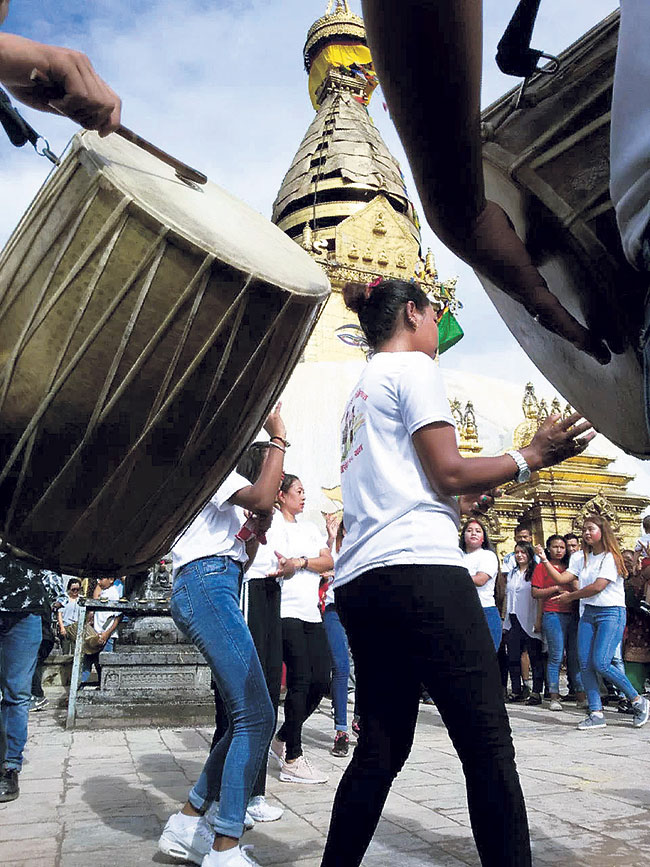
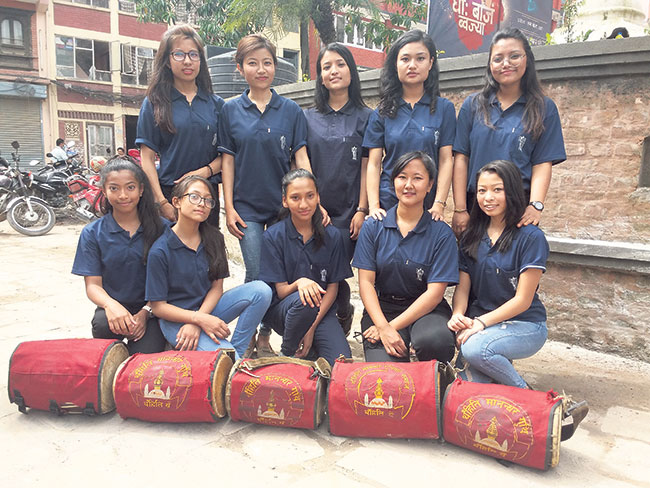
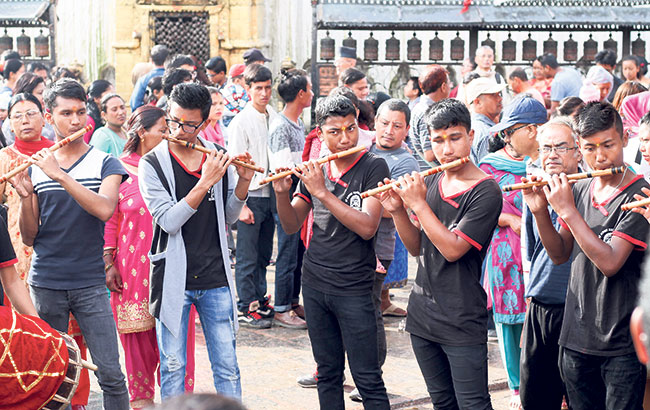
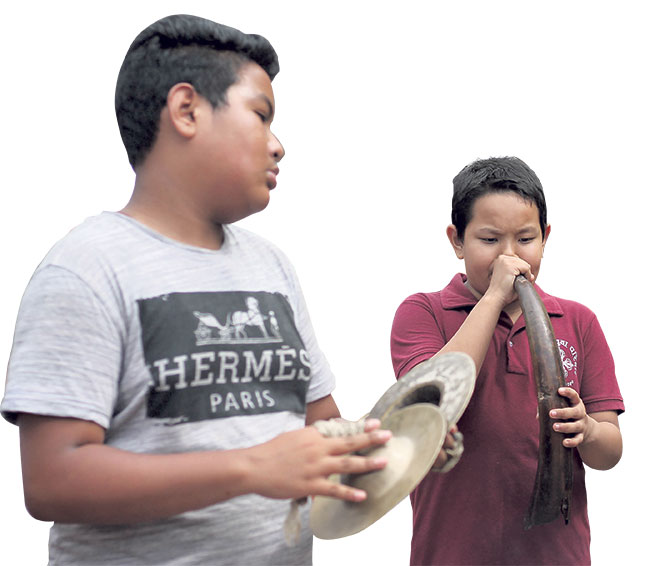
Leave A Comment